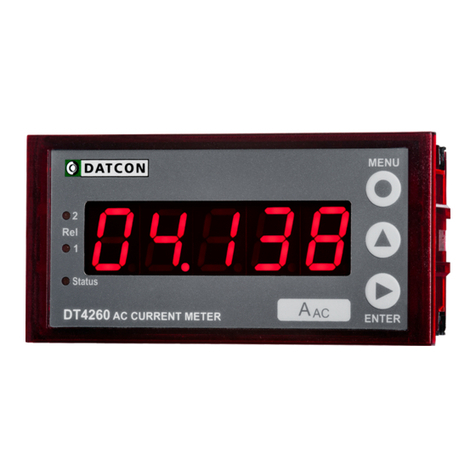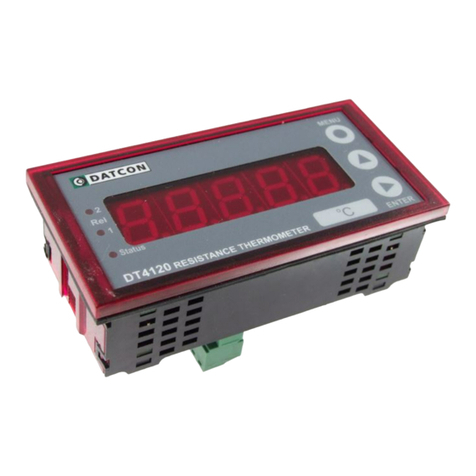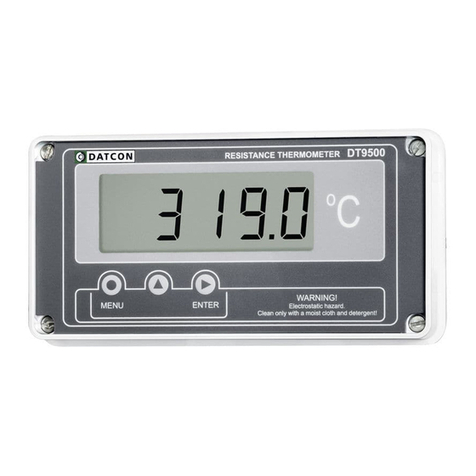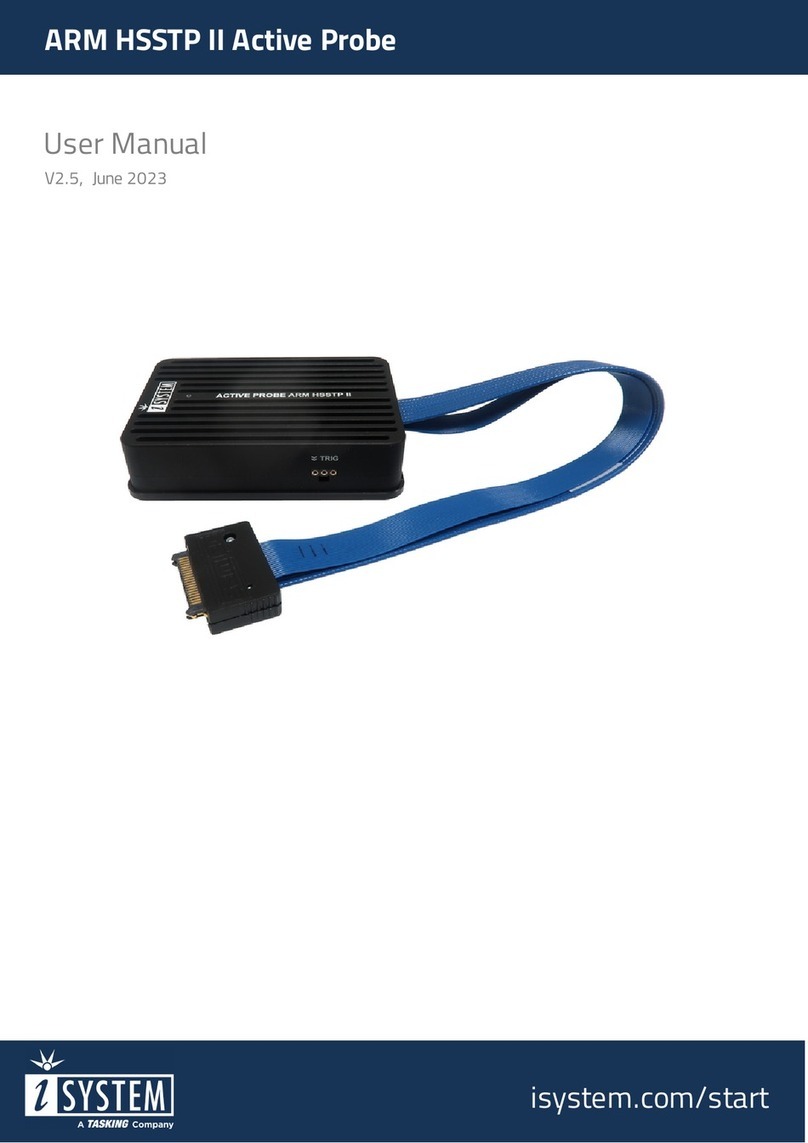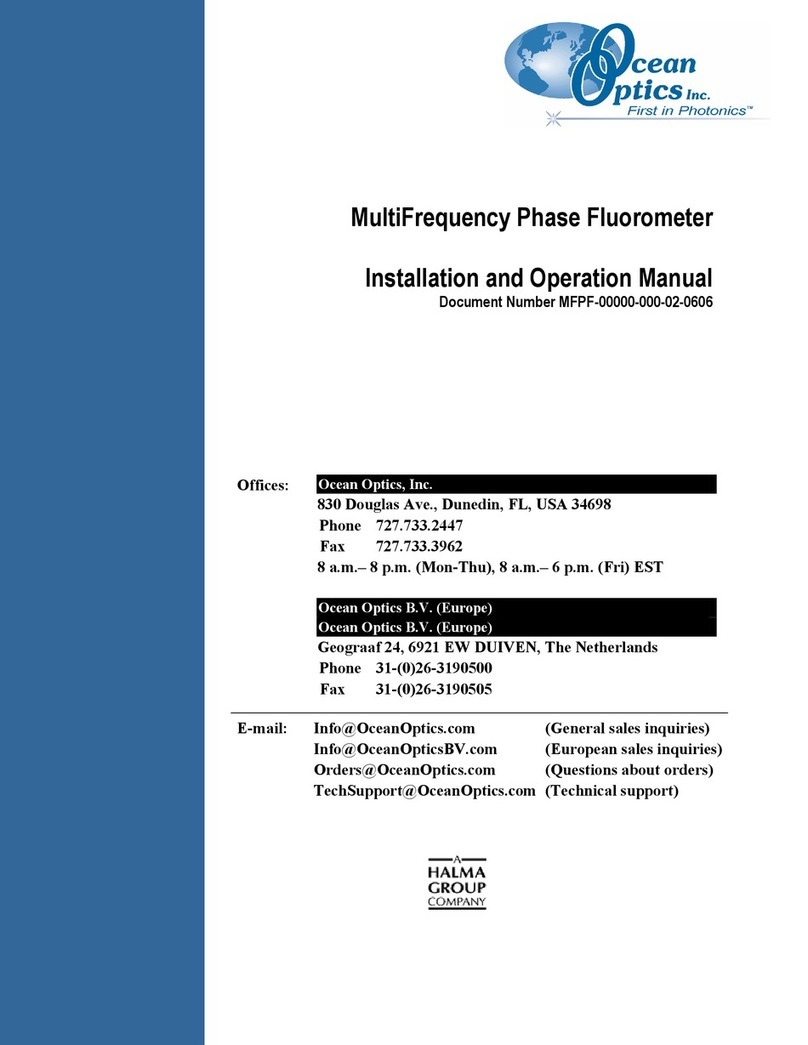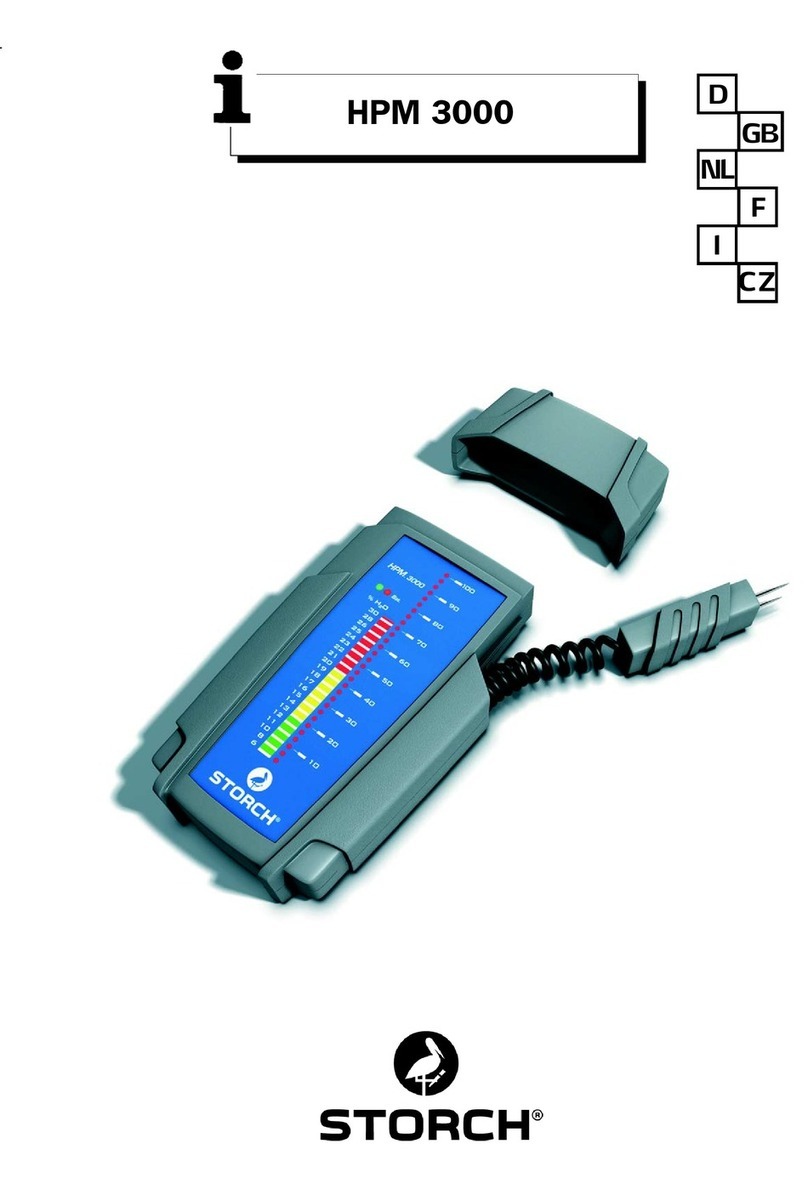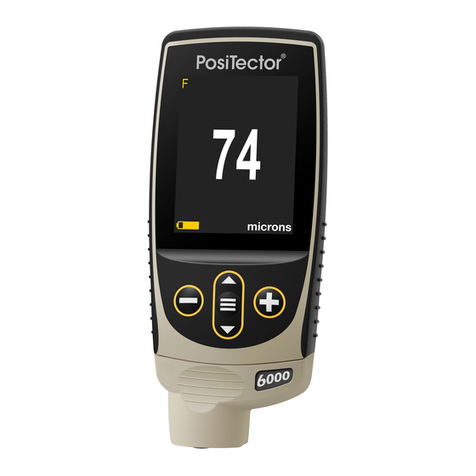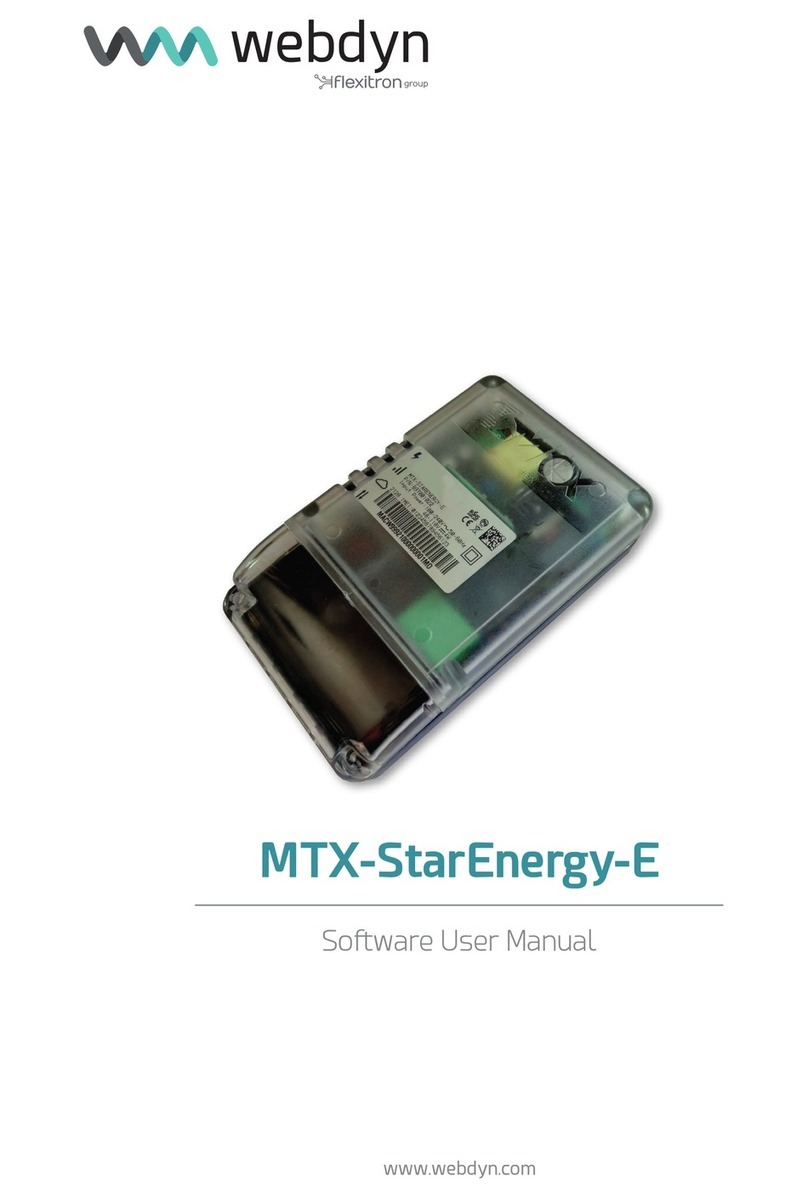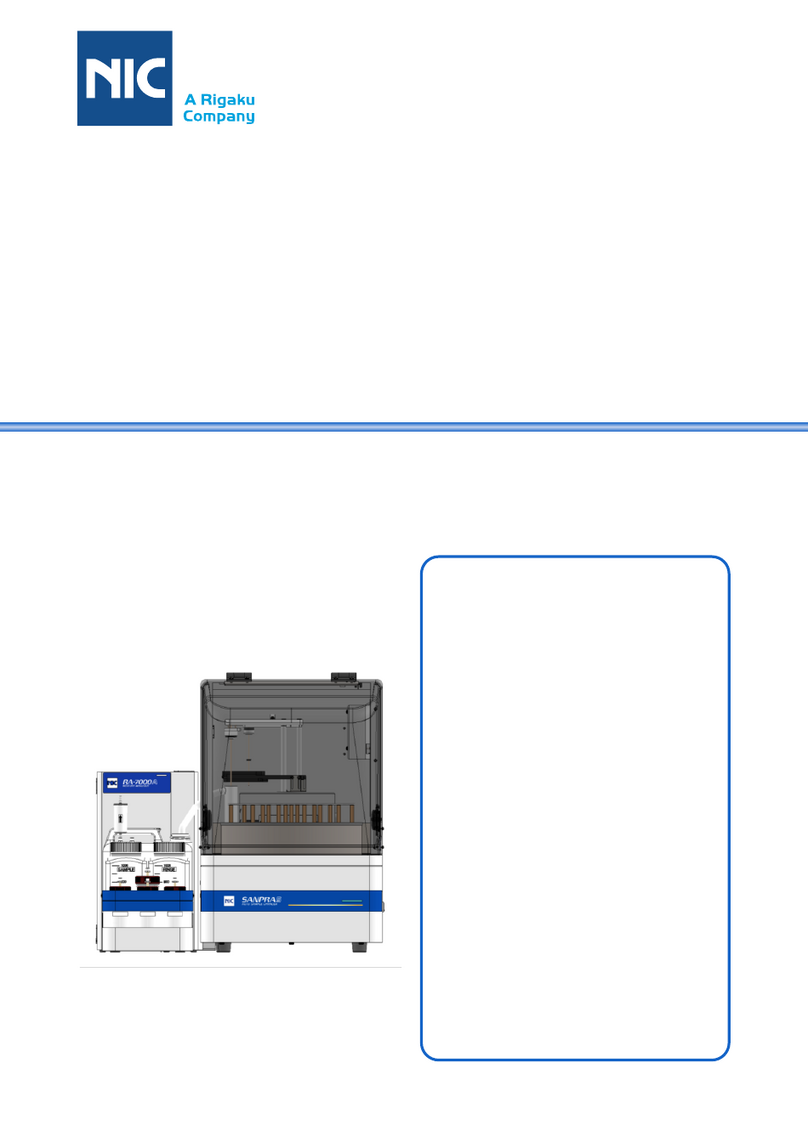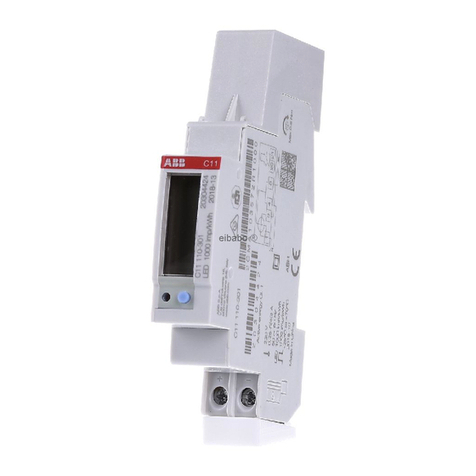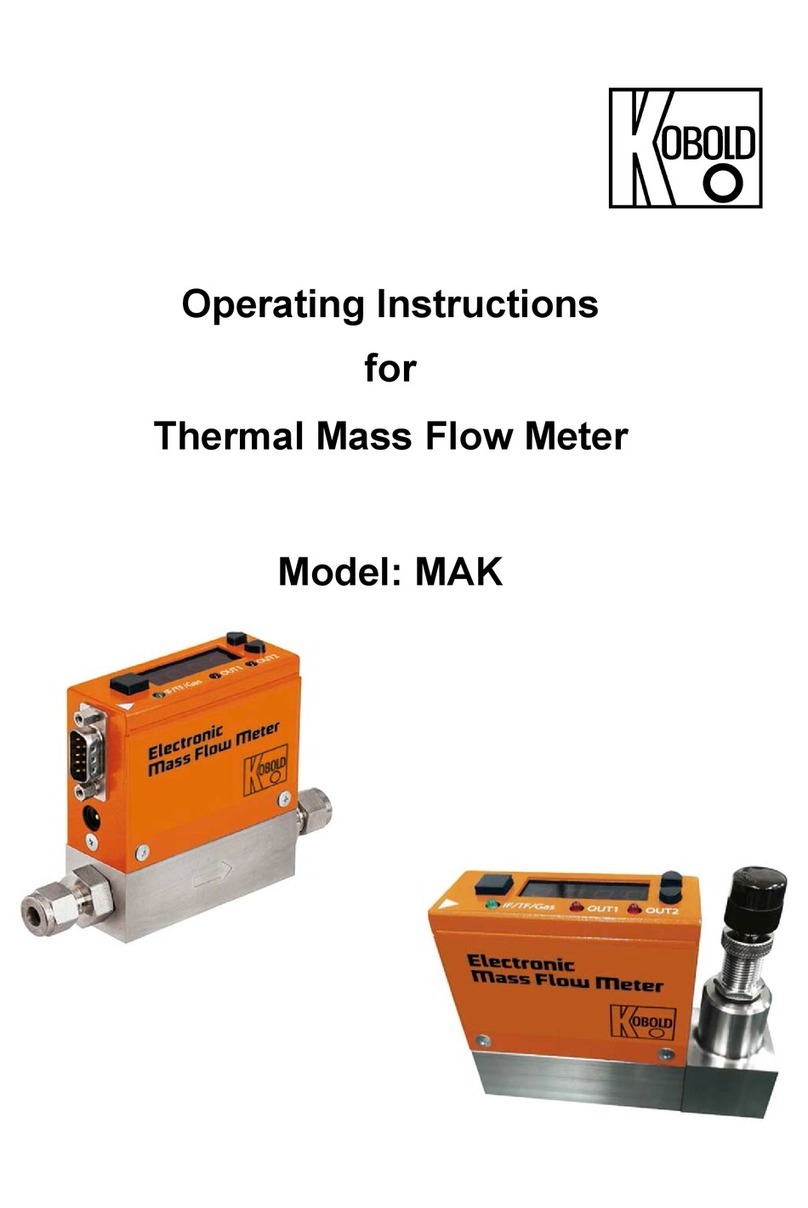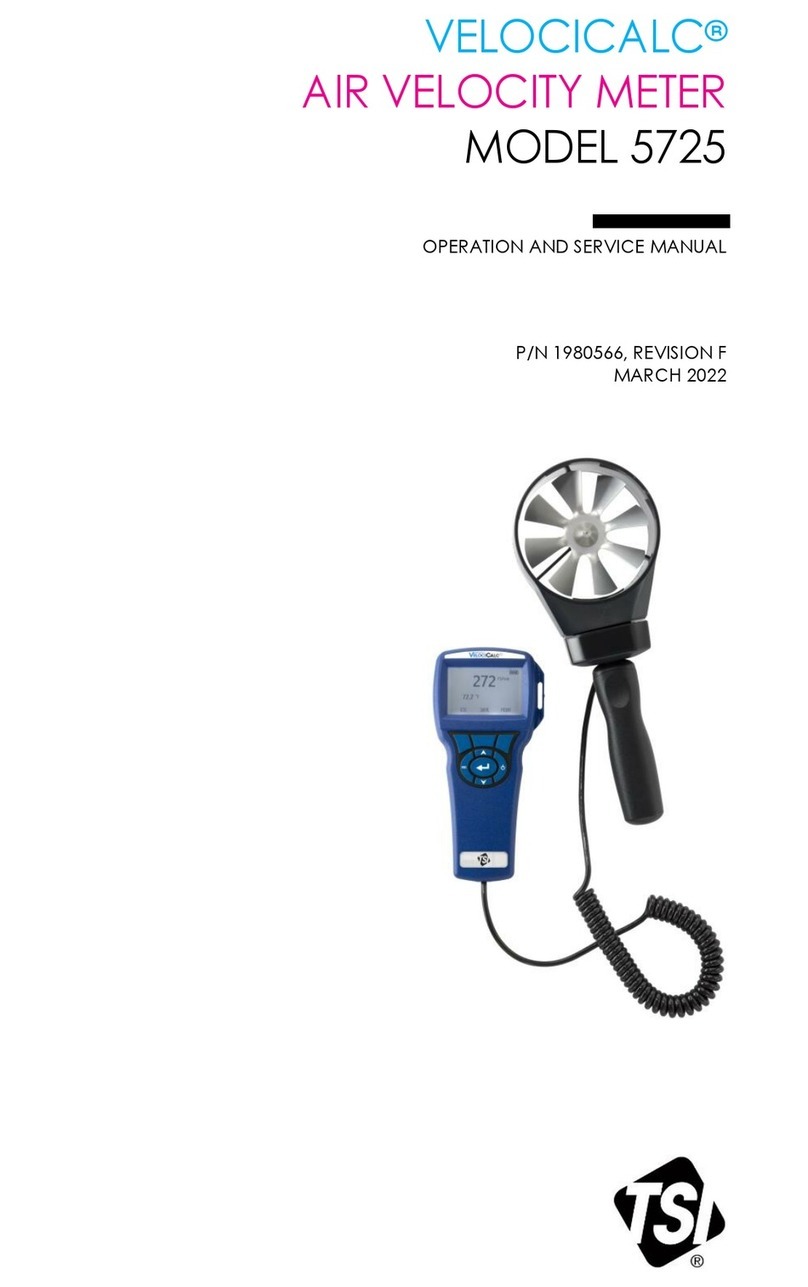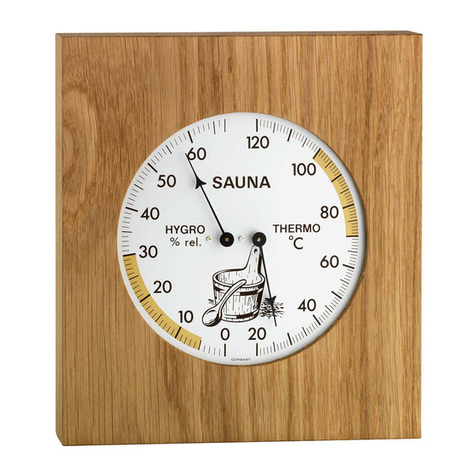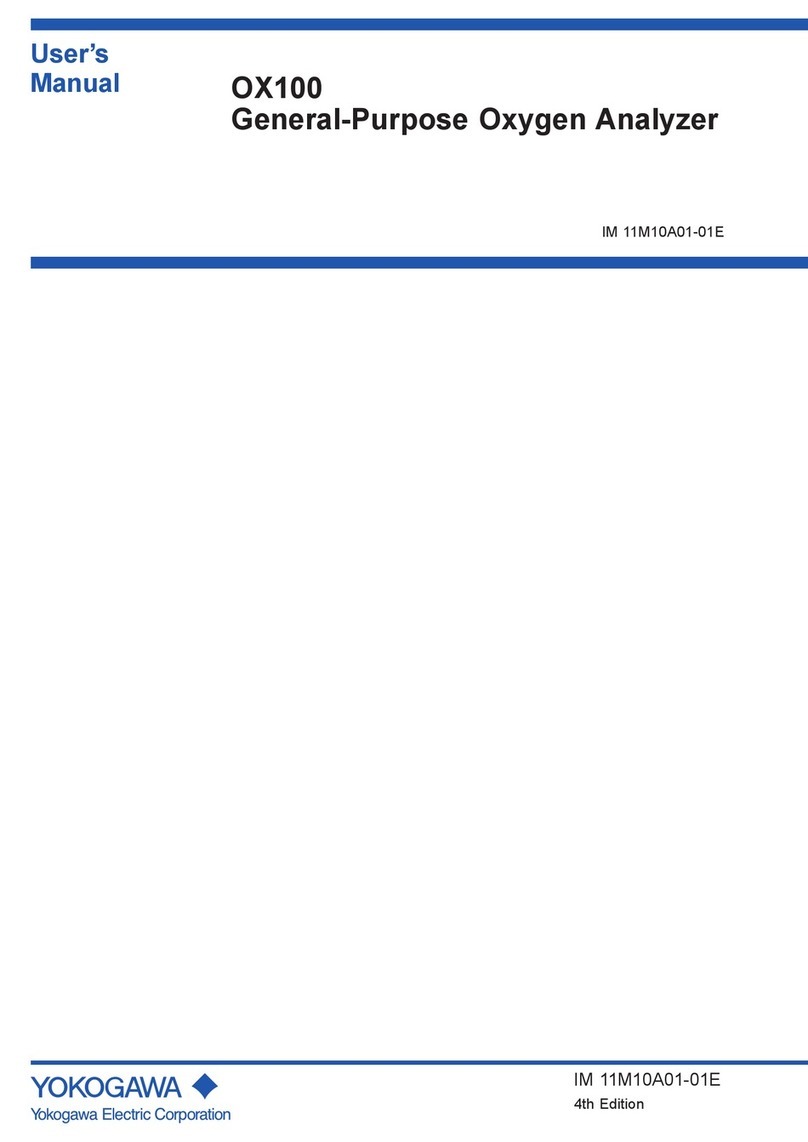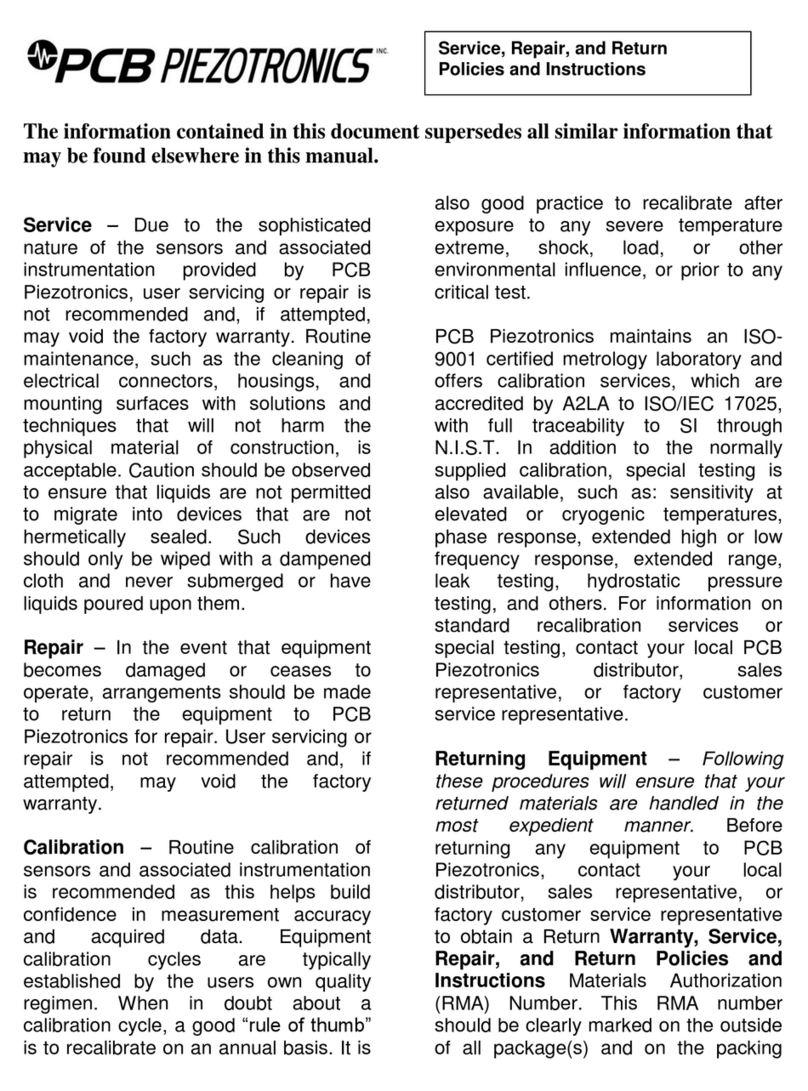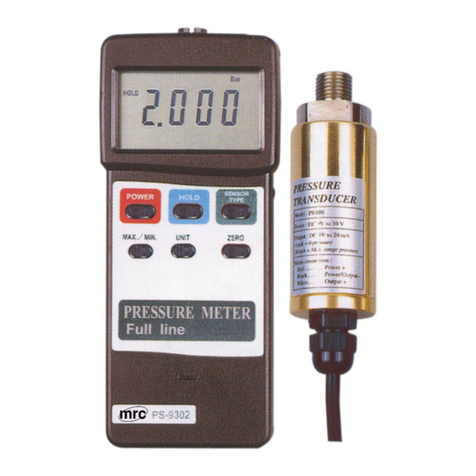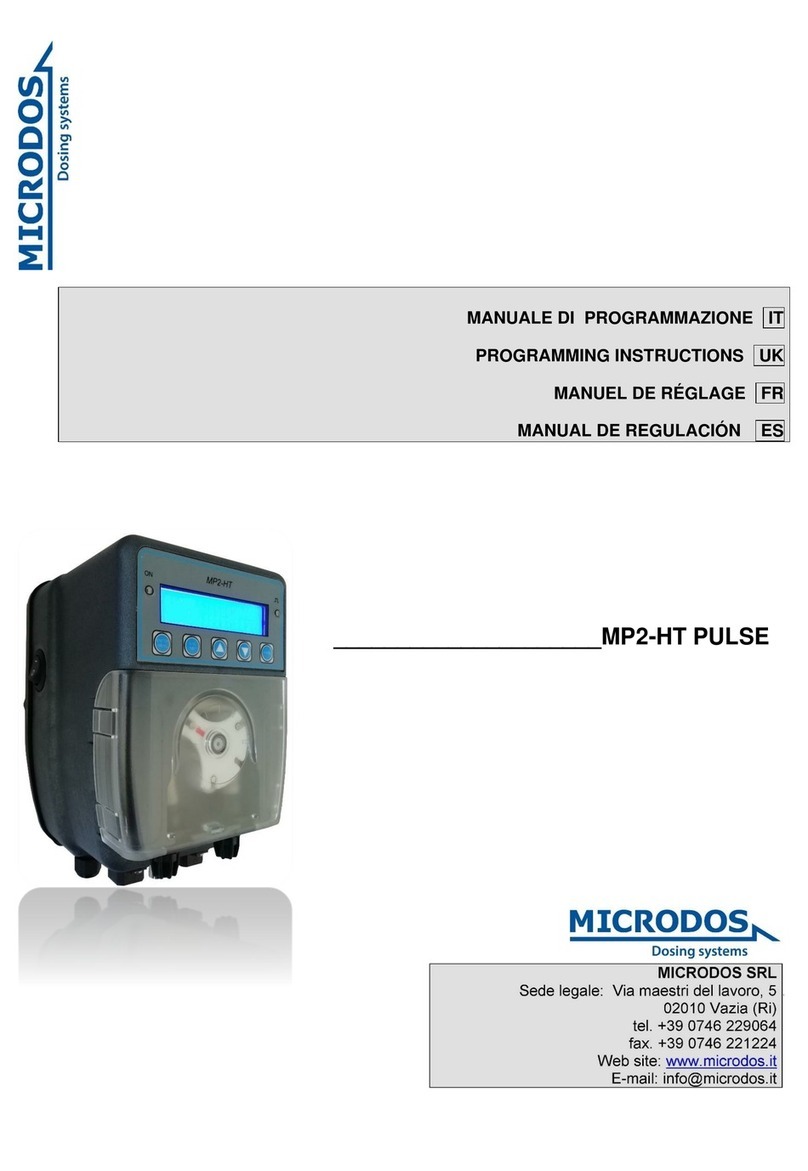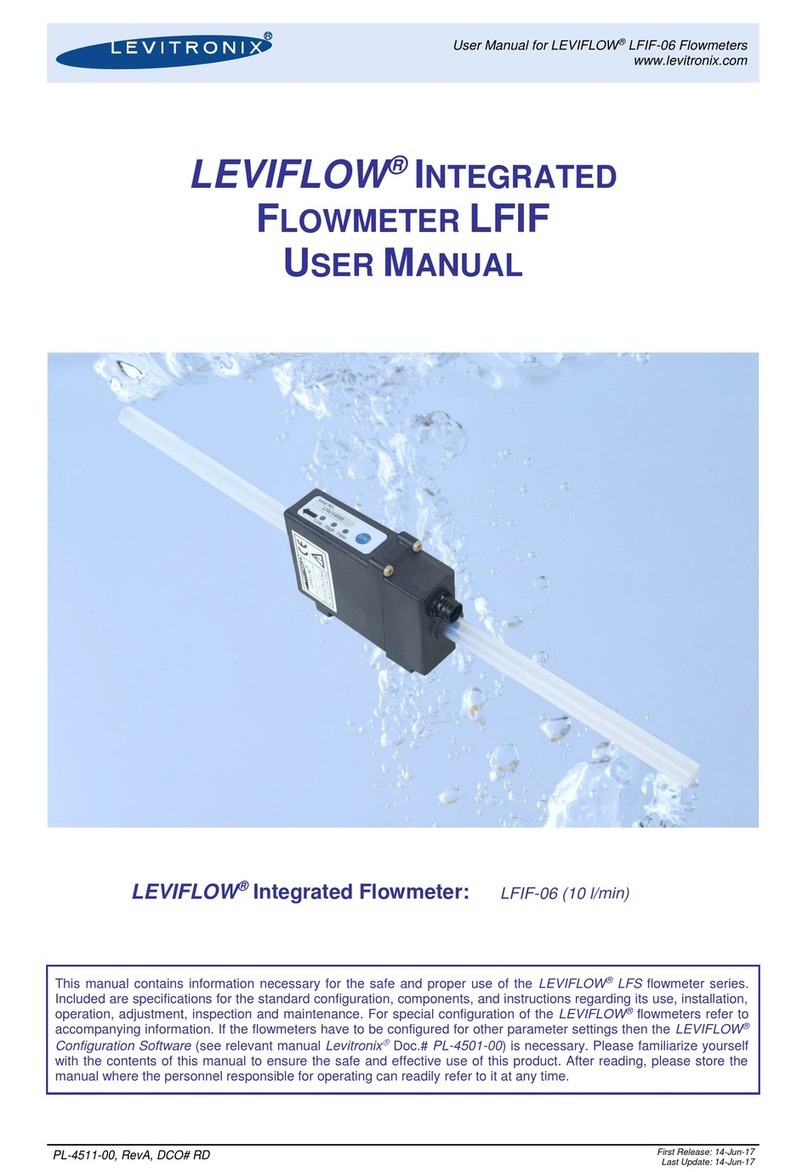Datcon DT9000 User manual

DT9000
Intrinsically Safe Process Indicator
Operating Instructions

DT9000
2 20171205-V2
Contents
1. About this document .....................................................4
1.1. Function ................................................................................... 4
1.2. Target group............................................................................. 4
1.3. Symbolism used....................................................................... 4
2. For your safety ...............................................................5
2.1. Authorised personnel ............................................................... 5
2.2. Appropriate use........................................................................ 5
2.3. Warning about misuse ............................................................. 5
2.4. General safety instructions....................................................... 5
2.5. EU conformity........................................................................... 5
2.6. Safety information for Ex areas................................................ 6
2.7. Environmental instructions ....................................................... 6
3. Product description .......................................................7
3.1. Delivery configuration............................................................... 7
3.2. Principle of operation ............................................................... 8
3.3. Adjustment ............................................................................... 9
3.4. Storage and transport .............................................................. 9
4. Mounting.......................................................................10
4.1. General instructions ............................................................... 10
4.2. Main dimensions of the instrument ........................................ 10
4.3. Mounting as a wall-instrument ............................................... 11
4.4. Mounting as a panel-instrument............................................. 14
5. Connecting ...................................................................16
5.1. Connecting into the current loop ............................................ 16
6. Display and manual controls ......................................21
6.1. The first start-up ..................................................................... 21
6.2. Characters and mnemonics appearing on the display ........... 22
6.3. Manual controls...................................................................... 25

DT9000
20171205-V2 3
7. Setting-up .....................................................................28
7.1. Typing the code (password) in ............................................... 28
7.2. The menu ............................................................................... 30
7.3. Display modes of limit output status (01. menu item) ............ 31
7.4. Setting up the limit outputs (02. and 03. menu items)............ 33
7.5. Limit output alarm mode......................................................... 39
7.6. Decimal point position (04. menu item).................................. 41
7.7. The physical value assigned to 4 mA (05. menu item) .......... 42
7.8. The physical value assigned to 20 mA (06. menu item) ........ 44
7.9. The number of averaged measurements (07. menu item)..... 46
7.10. Display refresh time (08. menu item) ................................... 48
7.11. Tests (09. menu item) .......................................................... 50
7.12. Changing the user code (10. menu item)............................. 52
7.13. Changing the supervisor code (11. menu item) ................... 54
7.14. Display operating modes (12. menu item) ........................... 56
7.15. Disable displaying the leader zeros (13. menu item) ........... 58
7.16. Clear minimum and maximum values (14. menu item)........ 60
7.17. Resetting the default settings (15. menu item)..................... 61
8. Fault rectification .........................................................62
8.1. Fault finding............................................................................ 62
8.2. Repairing................................................................................ 62
9. Dismounting .................................................................62
9.1. Dismounting procedure .......................................................... 62
9.2. Disposal ................................................................................. 62
10. Appendix.....................................................................63
10.1. Technical specifications ....................................................... 63
10.2. Application example ............................................................. 65
10.3. Error messages.................................................................... 66
10.4. Messages of critical errors ................................................... 67
10.5. Description of the menu items.............................................. 68
10.6. Messages and error messages during setting up ................ 71
10.7. Setting up the instrument (Example).................................... 72
10.8. The limit outputs (training material)...................................... 74
10.9. ATEX Certification................................................................ 85

DT9000
4 20171205-V2
1. About this document
1.1. Function
This operating instructions manual has all the information
you need for quick set-up and safe operation of DT9000.
Please read this manual before you start setup.
1.2. Target group
This operating instructions manual is directed to trained
personnel. The contents of this manual should be made
available to these personnel and put into practice by them.
1.3. Symbolism used
Information, tip, note
This symbol indicates helpful additional information.
Caution, warning, danger
This symbol informs you of a dangerous situation that
could occur. Ignoring this cautionary note can impair the
person and/or the instrument.
Ex applications
This symbol indicates special instructions for Ex
applications.
•
List
The dot set in front indicates a list with no implied
sequence.
→
Action
This arrow indicates a single action.
1
Sequence
Numbers set in front indicate successive steps in a
procedure.

DT9000
20171205-V2 5
2. For your safety
2.1. Authorised personnel
All operations described in this operating instructions
manual must be carried out only by trained and authorised
specialist personnel. For safety and warranty reasons, any
internal work on the instruments must be carried out only
by DATCON personnel.
2.2. Appropriate use
The DT9000 is a 4-20 mA loop-powered intrinsically safe
process indicator. Detailed information on the application
range of the DT9000 is available in chapter „Product
description”.
2.3. Warning about misuse
Inappropriate or incorrect use of the instrument can give
rise to application-specific hazards, or demage to system
components through incorrect mounting or adjustment.
2.4. General safety instructions
The DT9000 is a high-tech instrument requiring the strict
observance of standard regulations and guidelines. The
user must take note of the safety instructions in this
operating instructions manual, the country-specific
installation standard as well as all prevailing safety
regulations and accident prevention rules.
2.5. EU conformity
The DT9000 is in conformity with the provisions of the
following standards:
MSZ EN 60079-0:2013 (ATEX)
MSZ EN 60079-0:2013/A11:2014 (ATEX)
MSZ EN 60079-11:2012 (ATEX)
MSZ EN 61326-1:2013 (EMC)
MSZ EN 55011:2016 (EMC)
MSZ EN 55011:2016/A1:2017 (EMC)
MSZ EN 61010-1:2011 (LVD)
MSZ EN 50581:2011 (RoHS 2)

DT9000
6 20171205-V2
2.6. Safety information for Ex areas
Please note the Ex-specific safety information for
installation and operation in Ex areas. These safety
instructions are part of the operating instructions manual
and come with the Ex-approved instruments.
2.7. Environmental instructions
Protection of the environment is one of our most important
duties.
Please take note of the instructions written in the following
chapters:
•Chapter 3.4. Storage and transport
•Chapter 9.2. Disposal

DT9000
20171205-V2 7
3. Product description
3.1. Delivery configuration
Delivered items The scope of delivery encompasses:
•DT9000
•2 pcs. of srew clamps (only panel mounting version)
•2 pcs. Pg 11 cable entries
• instrument sealing (only panel mounting version)
•documentation:
this oparating instructions manual
certification
warranty
The instrument is built from the following main parts:
Main parts
1. instrument case
2. front panel with 3 mambrane push buttons

DT9000
8 20171205-V2
3.2. Principle of operation
Area of application DT9000 is an intrinsically safe loop-powered process
indicator. It capable of displaying linear process variables
of 4-20 mA transmitters in engineering units. The
transmitter signal may come up to zone 0 also. Due to the
function of DT9000 it can be placed in zone 1 or zone 2.
Two isolated outputs are available with different operating
modes for limit signaling or for simple control purposes.
DT9000 is housed in a moulded polycarbonate case
hauseproof to IP65 for installation in the field or on the
control panel.
Operating principle
The 4-20 mA current flows through a measuring resistor
and is converted by a 16 bit A/D converter into digital
value. The digital value is processed by a microcontroller.
The user may set up the the configuration parameters:
scaling, decimal point position, display refresh rate, signal
filtering, limit modes, limit values, etc. through the front
panel membrane keypad and the parameters stored in
EEPROM. A two level password protects the settings from
unauthorised changes.
Large 4 ½-digit, 20.5 mm height liquid crystal display
makes process variables easily visible at a distance. A
label defining the appropriate engineering unit may be
attached to the right of the display.
DT9000 has two optically isolated transistor outputs for
limit signaling or for simple control purposes.
Power supply DT9000 is loop-powered from 4-20 mA signal, dropping
less than 2 V at 20 mA.

DT9000
20171205-V2 9
3.3. Adjustment
DT9000 can be adjusted through the 3 button front panel
keypad. All configuration parameters are stored in the
instrument EEPROM for unlimited period of time, even
when the loop current beeng switched off.
In factory setting the DT9000 displays the 4-20 mA loop
current with a resolution of three decimals.
The instrument doesn’t need any internal adjustment.
3.4. Storage and transport
This instrument should be stored and transport in places
whose climatic conditions are in accordance with Chapter
10.1. Technical specifications, as described under the
title: Environmental conditions.
The packaging of DT9000 consist of enviroment-friendly,
recyclable cardboard is used to protect the instrument
against the impacts of normal stresses occurring during
transportation. The corrugated cardboard box is made from
environment-friendly, recyclable paper. The inner
protective material is polyfoam and nylon, which should be
disposed of via specialised recycling companies.

DT9000
10 20171205-V2
4. Mounting
4.1. General instructions
Use the enclosed seal when mounting DT9000 on panel to
assure IP 65 protection between the instrument and the
panel from the front side (only panel mounting version).
Electrostatic hazard! Clean only a moist cloth and
detergent.
Mounting positions
Select a mounting position you can easily read the display
reach for mounting and connecting the instrument and that
minimises the hazard of water, dust or dump getting into
the instrument.
Mounting cable entries
The insrument is equipped with one PG11 cable entry and
two additional hole equipped with sealing plugs. Two PG11
cable entry is accessory. If required more than one cable
entry (see chapter 5.) put out the sealing plug turning it in
anticlockwise direction. To put in the cable entry use the
sealing turn it in clockwise direction. Tighten the screws so
much that ensures the desired sealing. Use only appropriet
tools.
4.2. Main dimensions of the instrument

DT9000
20171205-V2 11
4.3. Mounting as a wall-instrument
Removing the front
cover
In order to remove the front cover, first remove the four
fixing screws as shown in the drawing. A screwdriver of
appropriate head-size only should be used. Using
screwdrivers with inappropriate head-size may cause a
damage in the screws’ heads or in the instrument front
panel.
Remove the screws by turning them in anticlockwise
direction as shown in the drawing Step (1). The screws are
secured against falling out. After this you can simply take
away the front cover from the housing (2) and you can
open it by turning it downwards (3). Plastic ties are used to
fasten the front cover to the housing, preventing it from
falling.

DT9000
12 20171205-V2
Preparatory steps There are four through-holes, shown by arrows in the
following drawing, for the fastening of the housing. The
diameters of the holes are made for M3 screws.
Holes for mounting
1. Mark the places of the holes in accordance with the
drawing.
2. Make the holes for mounting ready.
3. Remove any burrs from the ready-made holes.
Please observe the safety rules throughout the operation.

DT9000
20171205-V2 13
Mounting the instrument
Four M3 threaded screws are needed for mounting the
instrument (these are not accessories). The type of the
screws depends on the wall-material, while the dimensions
depend on the wall-thickness. The use of cross recessed
pan head screws is recommended to make the mounting
easier. The minimum screw-length should be the wall-
thickness + 10 mm.
During mounting, please observe all safety rules, and use
only appropriate tools.
Secure the screws against getting loose. For this purpose
you may use spring lock or serrated lock washers.
Depending on the material of the wall, and in order to
ensure the most practicable mounting method, it is not
mandatory, of course, to use the above-described threaded
joints. Depending on the situation, special screw types for
wood or for metal sheets can also be used, or the joint can
be riveted too.
Mounting the front cover
back to its place
1. Check if there are alien materials left in the housing, like
small tools, wire or metal pieces, plastic chips, etc. If there
are, remove them.
2. Put back the front cover of the apparatus, taking care
that the sealing should get to its place. There should be no
gap, nor cables caught between the housing and the front
cover.
3. Tighten the front cover.
Turn the screws in clockwise direction. Tighten the screws
so much that ensures the desired sealing.

DT9000
14 20171205-V2
4.4. Mounting as a panel-instrument
Preparatory steps
1. Cut-out the panel according to the figure shows below.
The cut-out needs spetial tools, it must be carried out by
trained specialist personnel.
Cut-out dimensions

DT9000
20171205-V2 15
Mounting by the
screw clamps
2. Put on the enclosed seal onto the instrument case from
the rear side and fit it to the instrument holding frame
(Figure step 2).
3. Put the instrument into the prepared cut-out until it
possible and check the fitting of the seal between case and
mounting surface.
4. Put on the enclosed screw clamps onto the sides of the
instrument case (Figure step 4.1, 4.2).
Fix the instrument by turning the srews in clockwise
direction (Figure step 4.3).
Pay attention not to let pointed, sharp metal parts cause
accidents.

DT9000
16 20171205-V2
5. Connecting
5.1. Connecting into the current loop
In hazardous areas you should take note of the appropriate
regulations, conformity and type approval certificates of the
DT9000 and other instruments are connecting in the
current loop (e.g. power supply, transmitter, etc.).
The connection must be carried out by trained and
authorised personnel only!
There are two different cases for the current loop to be
connected:
•The DT9000 acts as a terminal device of the current loop.
In this case the signal comes via a pair of wires, and it
does not have to go to other devices.
The following figure shows this case:
Wiring plan, connecting
the DT9000 as a terminal
device:
(see also “Application
example”)
Be careful the polarity of
the cable.

DT9000
20171205-V2 17
Connecting the cables •The DT9000 is situated in the „middle” of the current loop.
In this case one cable comes from the signal source and
another cable goes to the processing unit(s). The following
figure shows this case.
Wiring plan, connecting
the instrument as an
intermediate device
(see also “Application
example”)
Be careful the polarity of
the cables.
Wiring plan, connecting
the limit outputs
(see also “Application
example”)
Be careful the polarity of
the cables.

DT9000
18 20171205-V2
Select connection cable Take note the suitability of the connecting cable.
We recommend the use of screened twisted pair cable.
The wire cross-section should be 0.25-1.5 mm2.
Select connection cable
for Ex applications
Take note of the corresponding installation regulations for
Ex applications. In particular, make sure that no potential
equalisation currents flow over the cable screen. In case of
grounding on both sides (for suppress the influence of high
frequency interference signals) this can be achived by use
of a capacitor (e.g. ceramic capacitor 1 nF, 1500 V) or
separate potential equalisation. The low frequency
potential equalisation currents are thus supressed, but the
protective effect against high frequency interference
signals remains.
Inserting the cable into
the instrument
1. Prepare the cable for the connection.
Remove approx. 30 mm of cable mantle, strip approx.
8 mm insulation.
2. Remove the instrument front cover (see chapter 4.3.).
3. Loosen compression nut of the cable entry.
4. Insert the cable into the instrument through the cable
entry.

DT9000
20171205-V2 19
Make sure before connection that the current loop is
switched off.
The push-in direct connector assemblies used allow a fast
connection of the cables.
Their proper usage is shown by the following figure:
Connecting the cables
into the terminal
assemblies
1. Push the stripped cable-end until it possible into the
terminal assembly. In the case of flexible cable-ends, you
can facilitate opening the connection part by pushing down
the white button.
2. By pushing the wire in, the self-closing connection is
being established. Check it by pulling it outwards slightly.
(3. When you disassemble the cable, push down the white
button by a screwdriver, and pull the cable-end out.)
There is no need to use great force for pushing the cable
in, neither for removal. The button can be pushed down
easily. Please do not exercise forces higher than
necessary, as it may cause damages to the terminal
assembly.

DT9000
20 20171205-V2
Finishing step 1. Check if the cables are connected properly (have you
connected all the cables; have you connected them to the
right place; is the connection stable; do not the cable-ends
touch each other).
2. Pull out the cable slighly trough the cable entry to leave
only the proper cable-length in the instrument inside.
3. Tighten the compession nut of the cable entry, the seal
ring must completely ancircle the cable.
Checking the
connections
After you have completed the connections, put the current
loop under voltage, in such a way that the nominal 4-20 mA
current should flow in the loop. If the connection is correct,
numbers or a characters has to appear on the display.
If nothing appears on the display, most probably there is no
current flowing in the loop. Check if the current is present
by using an ampermeter. If the current value is in the
4-20 mA range, check if everything has been done in
accordance with Chapter 5.1 Connecting into the current
loop.
You may check the voltage at the pins 5and 6of the
terminal assembly, the voltage should be a value between
1.5 and 2.2 V, while pin 6is the positive one, if the
connection is correct. In the case of reverse polarity, the
voltage value is less than 1 V, and 5is the positive pin.
With this you have completed the connection of DT9000.
Table of contents
Other Datcon Measuring Instrument manuals
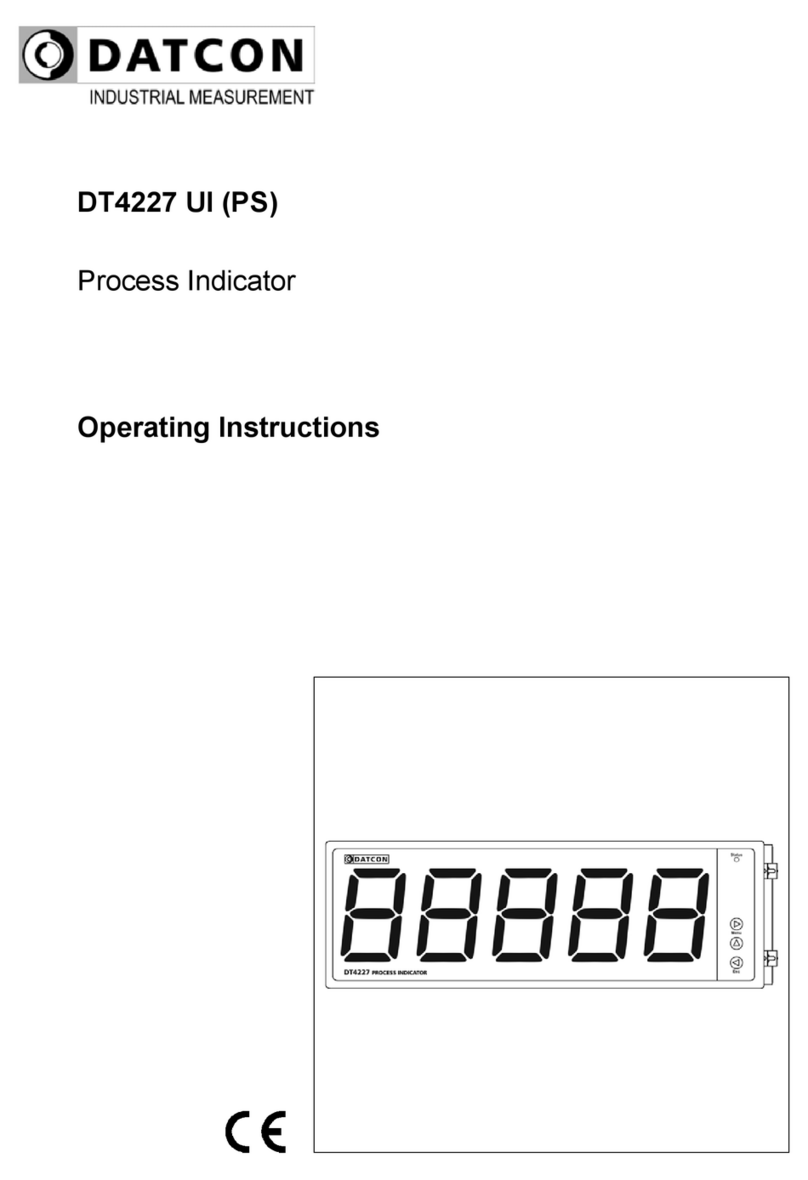
Datcon
Datcon DT4227 UI User manual
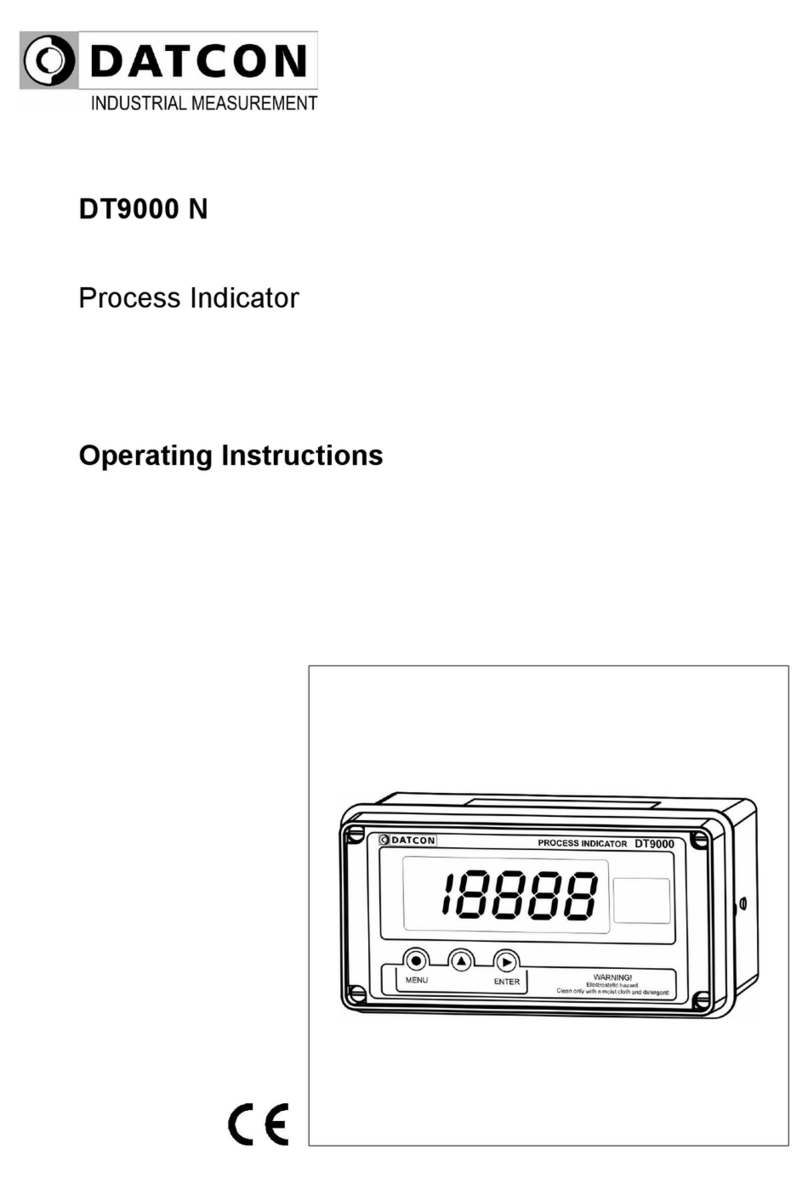
Datcon
Datcon DT9000 N User manual
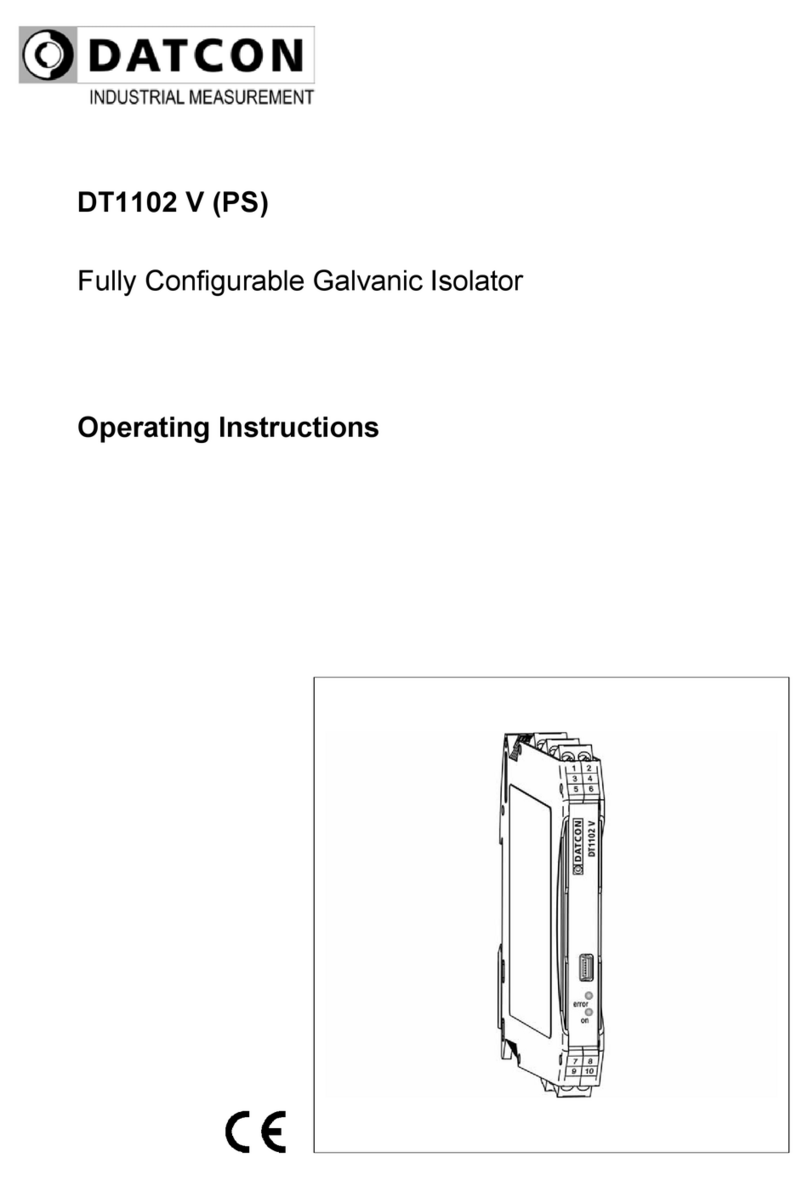
Datcon
Datcon DT1102 V User manual
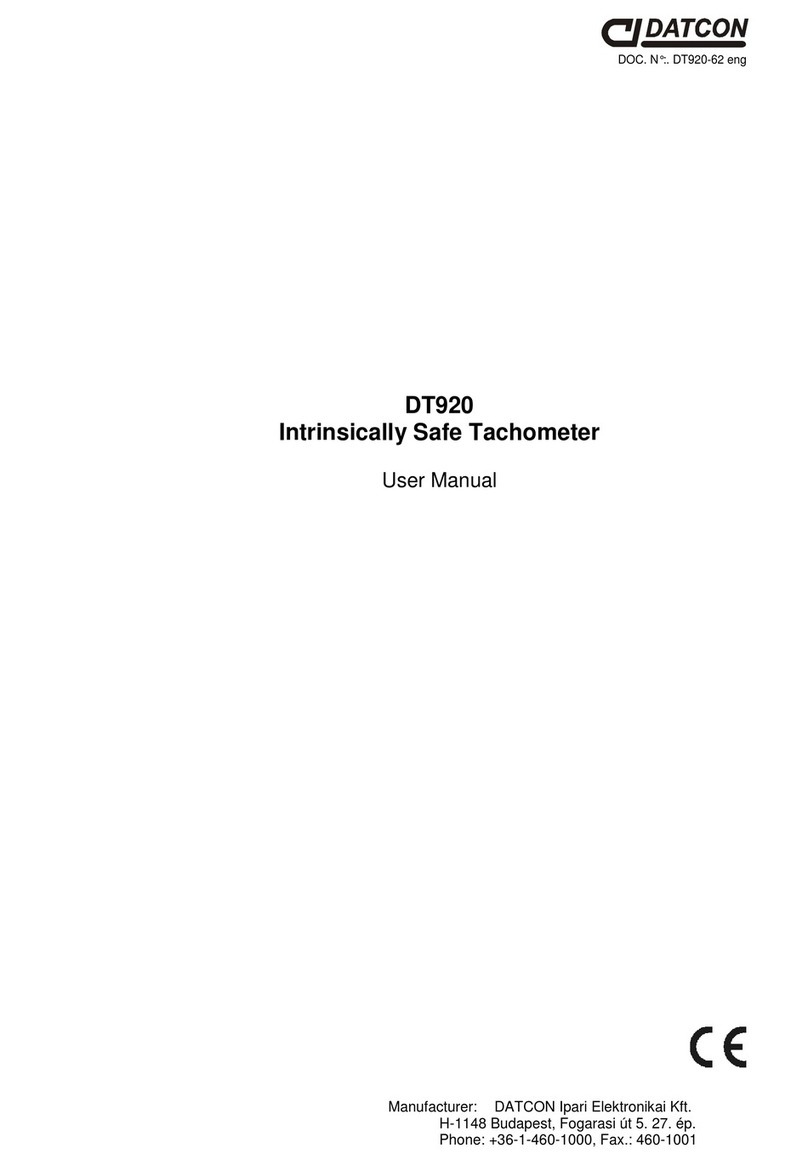
Datcon
Datcon DT920 User manual
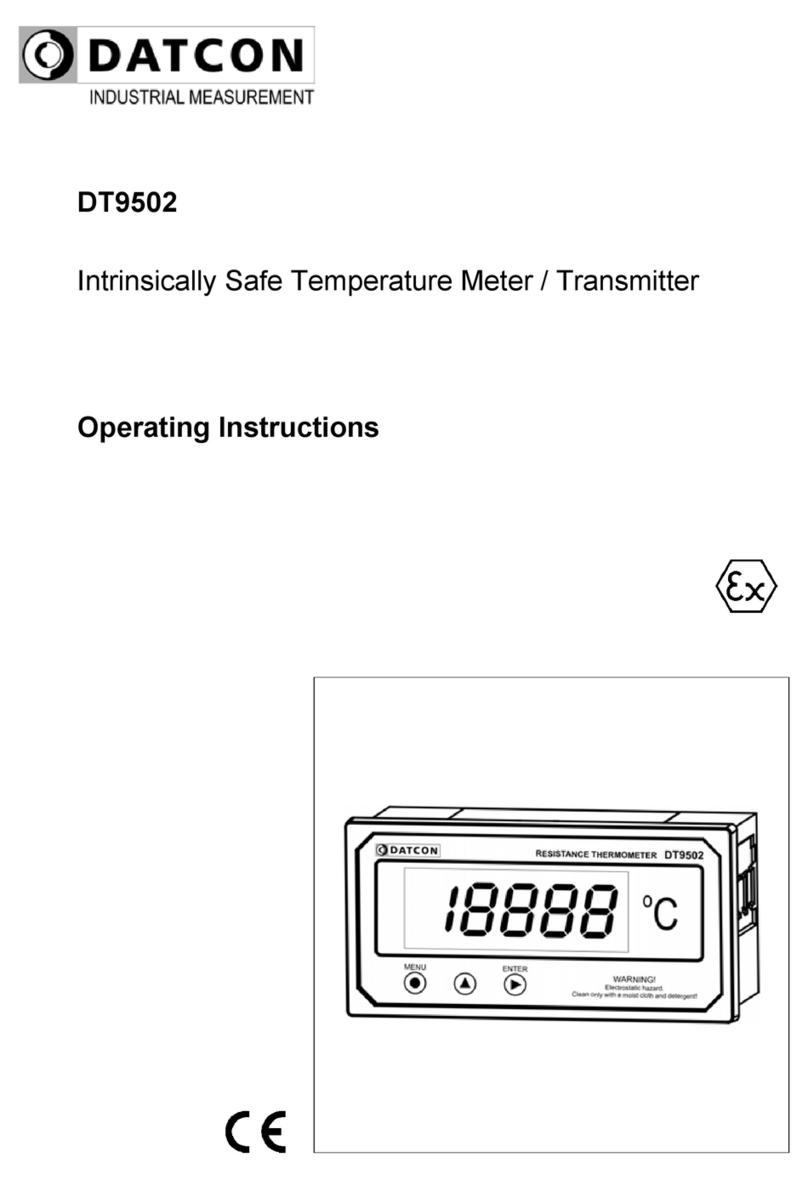
Datcon
Datcon DT9502 User manual
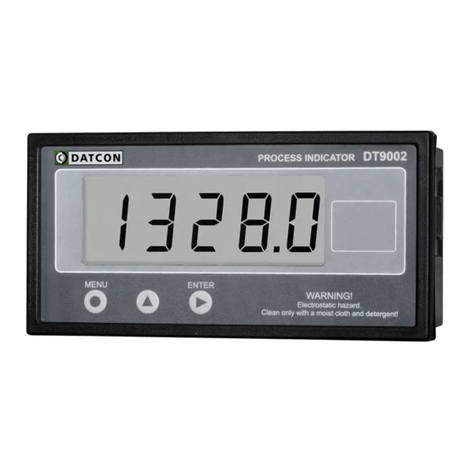
Datcon
Datcon DT9002 User manual

Datcon
Datcon PQRM5300 33 U I Series User manual
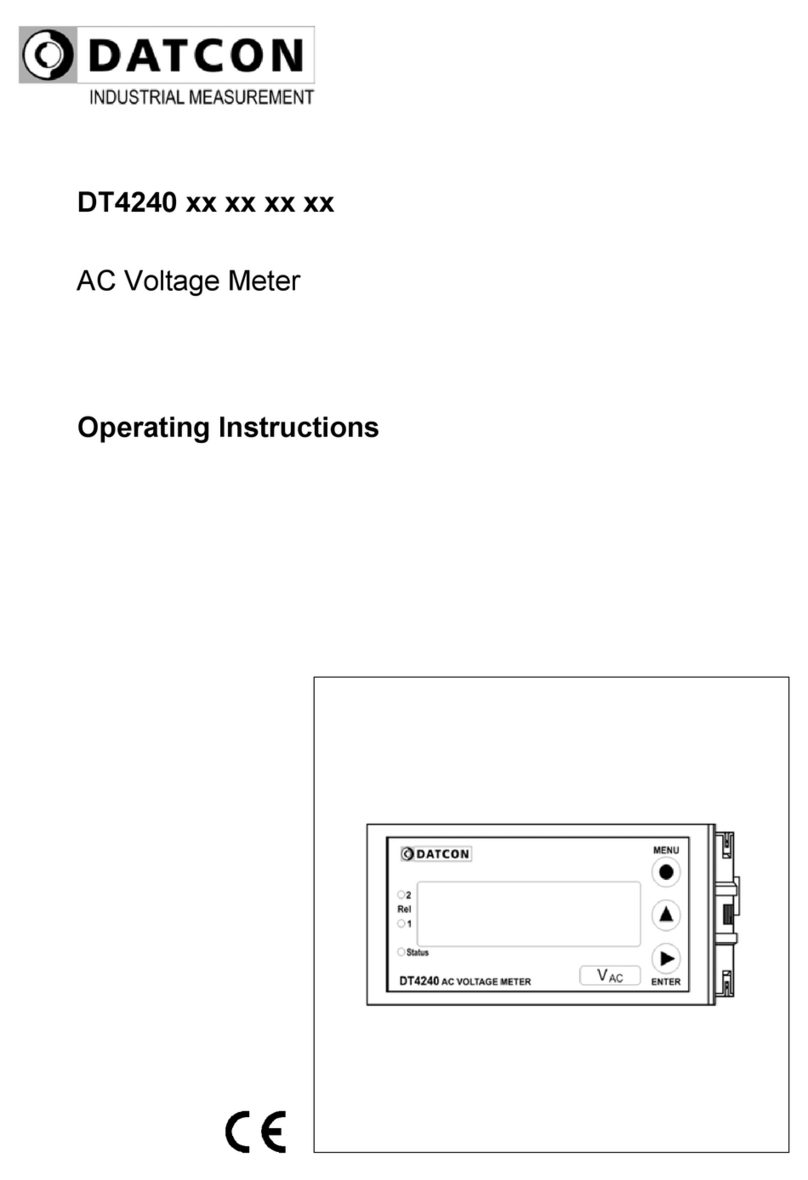
Datcon
Datcon DT4240 Series User manual
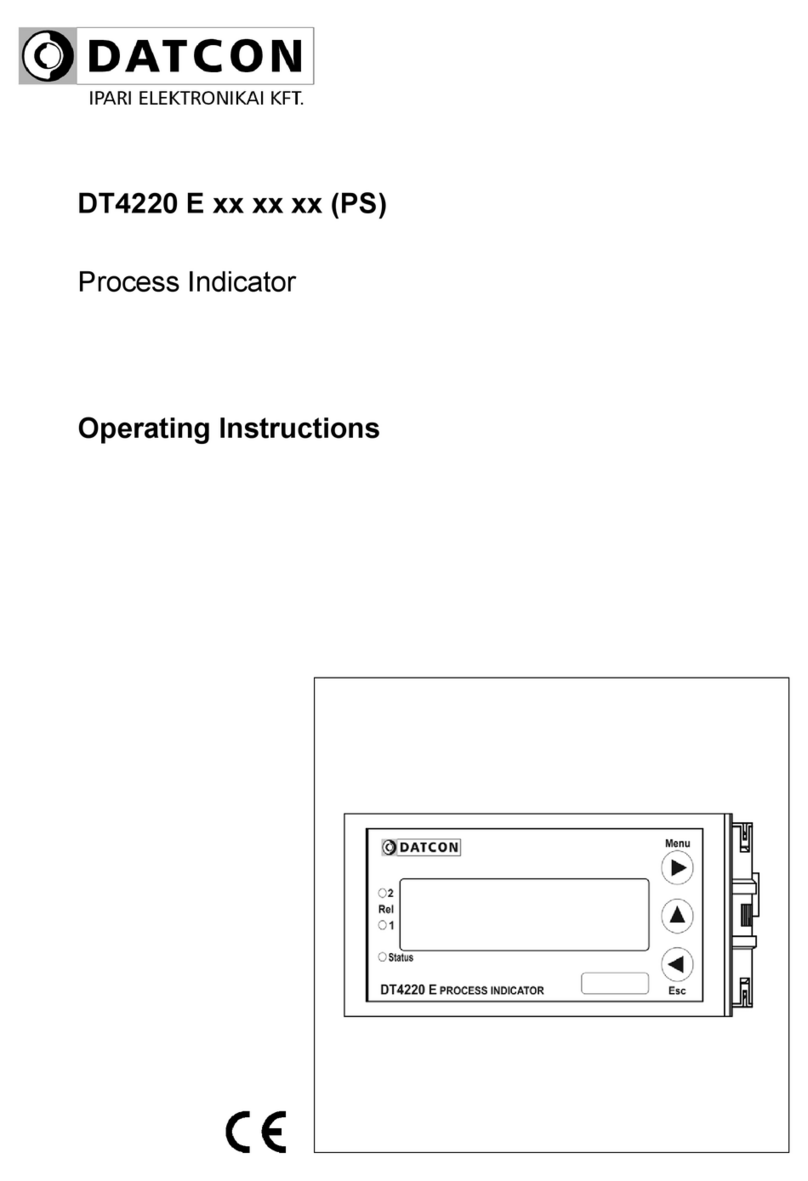
Datcon
Datcon DT4220 E Series User manual
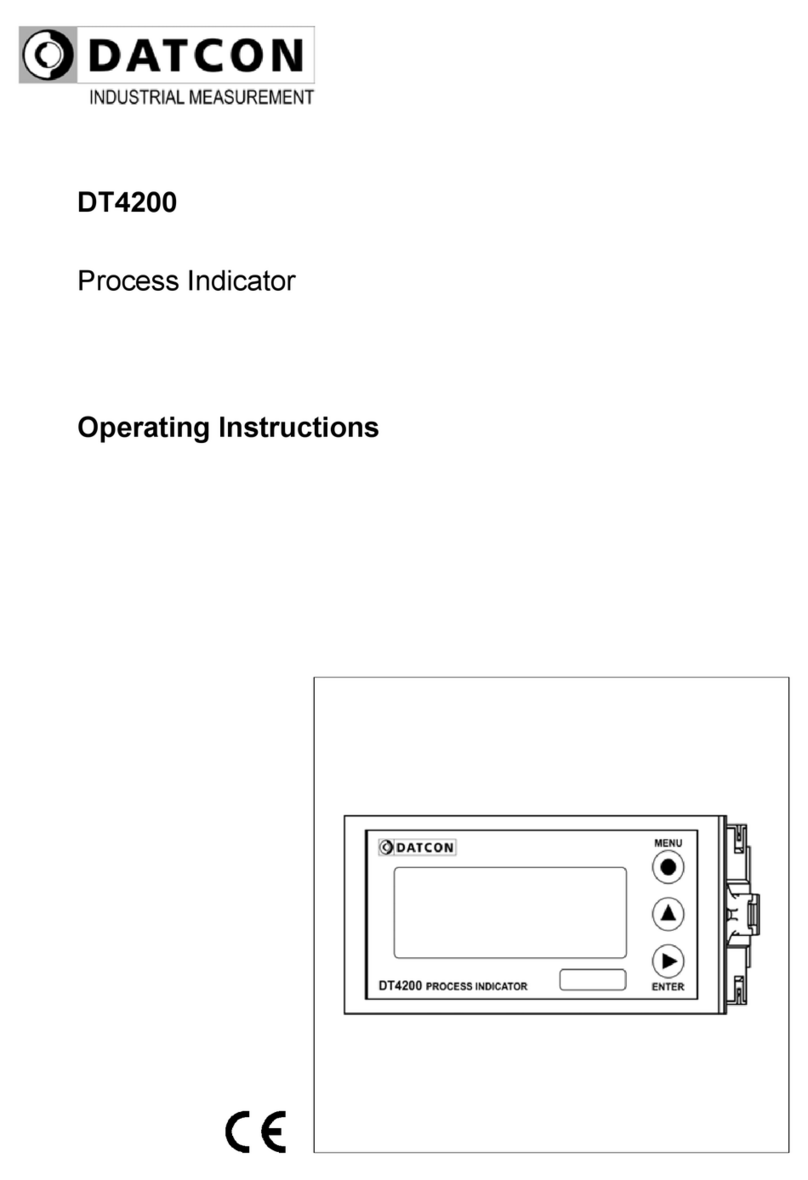
Datcon
Datcon DT4200 User manual
